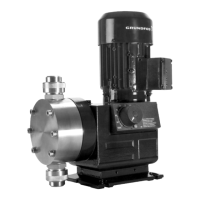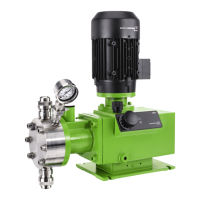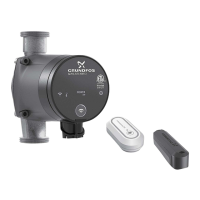32
15.720017-V6.0
DMX model 226 en
8.7 Maintenance
!
WARNING When dosing dangerous media, always refer to the
corresponding safety data sheets!
Wear protective clothing (goggles, gloves) when
working on the connections and lines!
Maintenance must only be carried out by authorized
specialists!
8.7.1 Intervals for Cleaning and Maintenance
Clean the overflow valve, and replace the diaphragm if necessary
❏ at least every 12 months or after 8000 operating hours or
❏ should faults occur.
8.7.2 Replacing the Diaphragm
● Shut down the dosing system.
● Make it impossible for a return flow or overpressure to occur.
● Loosen the 4 screws on the top part of the overflow valve.
● Remove top part of overflow valve.
● Remove the diaphragm.
● Insert new diaphragm.
● Return top part of overflow valve and tighten screws diagonally.
Max. torque 6 Nm.
● Start up the dosing system again.
● Tighten the screws on the top part of the overflow valve again after 48 hours
of operation. Max. torque 6 Nm.
8.5 Venting
A
B
The overflow valve can also be opened manually, thus serving as a venting valve
at the same time.
If manual venting is required (e.g. when commissioning or when the tank has been
replaced):
● Rotate the knob such that the smaller cut-out rests on the nub of the dosing
head (the rotary knob is then further away from the dosing head, the valve
spring is unloaded (position B).
● Once the pump has been completely vented, rotate the knob back into the
position "Operation" (position A).
A Operation
B Venting
8.6 Possible Faults
Fault Cause Elimination
Overflow valve set incorrectly
too low
Set overflow valve to a higher
openin
pressure
Diaphra
m fault
Replace diaphra
m
Contamination Clean overflow valve
No output from overflow valve
Overflow valve set incorrectly
too hi
h
Set overflow valve to a lower
openin
pressure
Permanent output from
overflow valve

